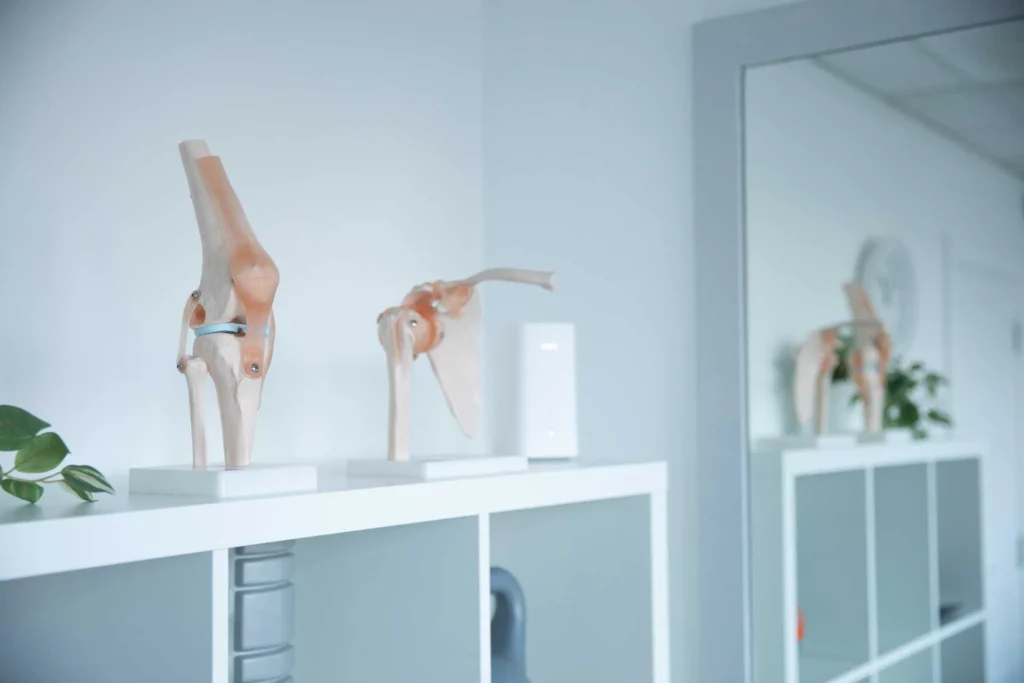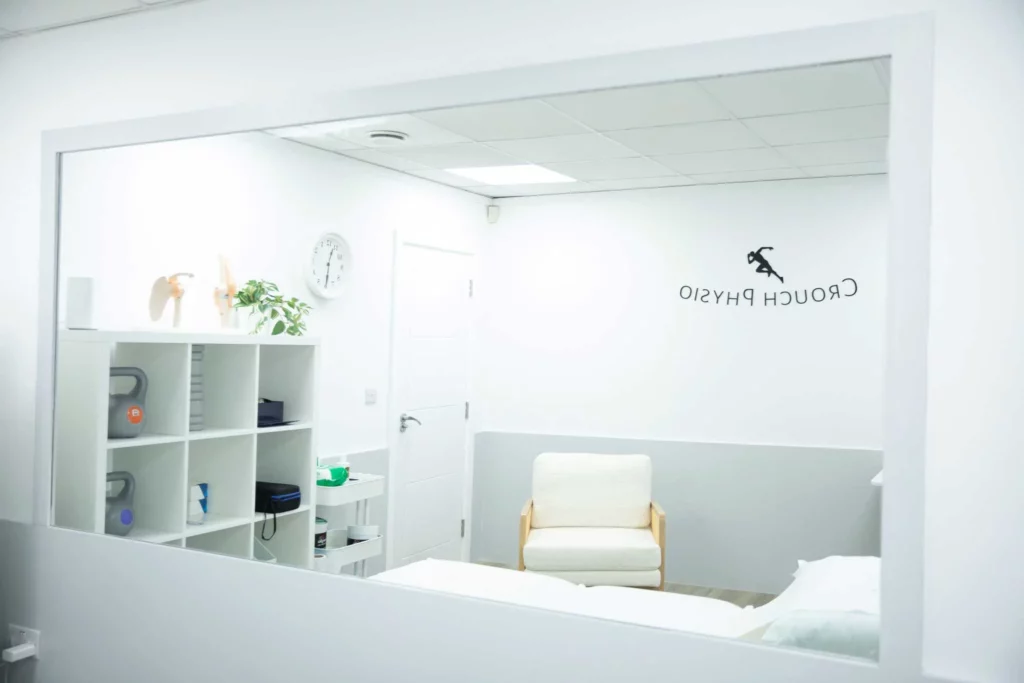Patellofemoral pain, often known as “runner’s knee,” can be a real nuisance for anyone who enjoys being active.
As a physiotherapist, I’ve seen my fair share of patients struggling with this troublesome knee issue. The good
news is, with the right approach, you can manage and even prevent patellofemoral pain. Here’s a rundown of the
dos and don’ts based on the latest research and clinical experience.
DO: Strengthen Your Quadriceps
One of the best things you can do for patellofemoral pain is to strengthen your quadriceps. Research shows that
improving quad strength can help reduce pain and improve function (1). Focus on exercises like squats, lunges,
and reverse Nordics. Make sure you’re performing these exercises with proper technique and not going into end
range straight away as that may actually increase pressure on the knee.
DON’T: Ignore Hip and Core Strength
It’s not just about the quads! Your hip and core muscles play a crucial role in stabilising your knee. Studies have
found that weak hip muscles can contribute to patellofemoral pain (2). Incorporate exercises like clamshells, glute
bridges, and planks into your routine to keep these muscles strong and supportive.
DO: Focus on Proper Footwear and Monitor Step Count
Wearing the right shoes whilst monitoring step count can make a big difference. Shoes that provide good arch
support and cushioning can help reduce the stress on your knees. Monitoring step count can help prevent
overload and build-up of pressure in the knee joint especially in early stages of rehab. A study highlighted the
importance of proper footwear in managing patellofemoral pain and aid in sport performance (3). Consider
visiting a specialist store where you can get fitted for the best shoes for your foot type and activity level.
DON’T: Overdo High-Impact Activities
While staying active is important, high-impact activities like running and jumping can aggravate patellofemoral
pain. Try to mix in low-impact exercises such as swimming, cycling, or using an elliptical machine. A 2017 review
emphasised the benefits of low-impact activities in managing knee pain (4).
DO: Use Patellar Taping or Bracing
Using tape or a brace can provide extra support to your knee and help manage pain. Studies have shown that
patellar taping can improve patellofemoral alignment and reduce pain (5). Braces can also offer additional
stability, especially during activities that might otherwise exacerbate your symptoms.
DON’T: Skip the Warm-Up
Warming up before exercise is crucial for preventing injuries and managing existing pain. A proper warm-up
increases blood flow to your muscles and prepares your body for physical activity. Research indicates that a
good warm-up can reduce the risk of knee injuries (6). Spend at least 10-15 minutes warming up with dynamic
stretches and light aerobic activity.
DO: Maintain a Healthy Weight
Carrying extra weight can increase the stress on your knees. Maintaining a healthy weight through a balanced
diet and regular exercise can alleviate some of this pressure. Studies have found that weight management can a
factor in reducing patellofemoral pain (7).
DON’T: Ignore Persistent Pain
If your knee pain persists despite your best efforts, it’s time to see a professional. Persistent pain can indicate a
more serious issue that might require targeted treatment. A physiotherapist can help you develop a personalised
plan to address your specific needs and get you back on track.
DO: Stay Consistent with Your Rehab Exercises
Consistency is key when it comes to rehabilitation. Make sure you’re sticking to the exercise plan prescribed by
your physiotherapist and not changing things around constantly as it can hinder progression and, in some cases,
lead to regression. Set reminders if you need to and stay committed to your recovery.
DON’T: Compare Your Progress to Others
Everyone’s body responds differently to treatment. Comparing your progress to someone else’s can be
discouraging and counterproductive. Focus on your journey and celebrate your milestones, no matter how small
they may seem. Recovery is a personal process, and patience is crucial.
Conclusion
Managing patellofemoral pain requires a balanced approach that includes strengthening, proper footwear, and
mindful activity choices. By following these dos and don’ts, you can reduce your pain and improve your knee
function. Remember, if you’re ever in doubt, don’t hesitate to consult a physiotherapist. They can provide expert
guidance tailored to your individual needs.
Our Barnet, Cockfosters & Enfield Physio’s have tons of experience and are specialists in dealing with patellofemoral pain. Have confidence that our specialist Physiotherapists will closely assess, diagnose & treat you in the correct & evidence-based way for all injuries. You can book an appointment here.
Blog By: Emre Oz (Musculoskeletal Physiotherapist at Crouch Physio).
References
- Chiu, Joseph K W et al. “The effects of quadriceps strengthening on pain, function, and
patellofemoral joint contact area in persons with patellofemoral pain.” American journal of
physical medicine & rehabilitation vol. 91,2 (2012): 98-106.
doi:10.1097/PHM.0b013e318228c505 - Wang, Yongshen, et al. “Core training for pain management and functional improvement in
patients with patellofemoral pain syndrome: a systematic review and meta-analysis.” American
Journal of Physical Medicine & Rehabilitation (2024): 10-1097. - Chen, Ziyan, et al. “The effect of foot orthoses for patients with patellofemoral pain syndrome: A
systematic review and meta-analysis.” Heliyon 8.6 (2022). - Esculier, J. F., et al. “A systematic review of recommendations and treatments for patellofemoral
pain in guidelines.” Sports Medicine, 2017. - Crossley, K et al. “Patellar taping: is clinical success supported by scientific evidence?.” Manual
therapy vol. 5,3 (2000): 142-50. doi:10.1054/math.2000.0354 - Fradkin, Andrea J et al. “Effects of warming-up on physical performance: a systematic review
with meta-analysis.” Journal of strength and conditioning research vol. 24,1 (2010): 140-8.
doi:10.1519/JSC.0b013e3181c643a0 - Fick, Cameron N., et al. “Patellofemoral kinematics in patellofemoral pain syndrome: The
influence of demographic factors.” Journal of biomechanics 130 (2022): 110819.




